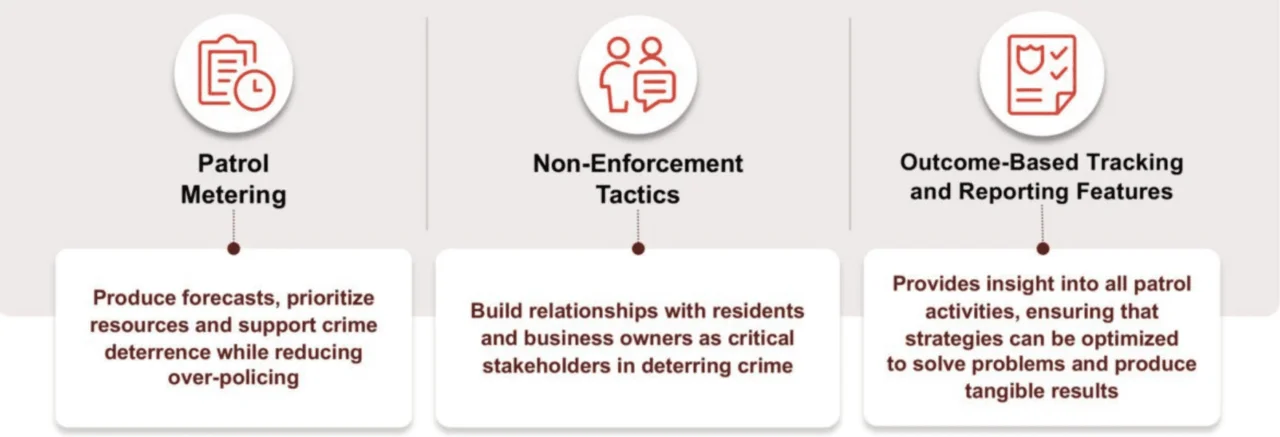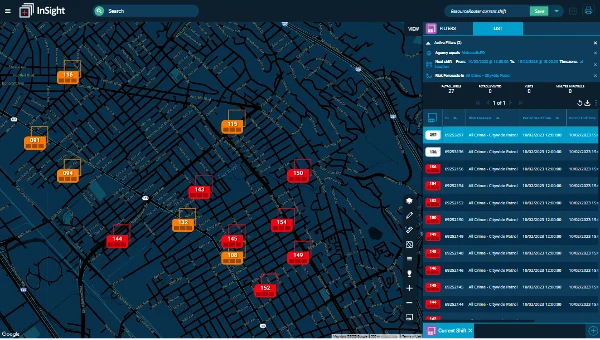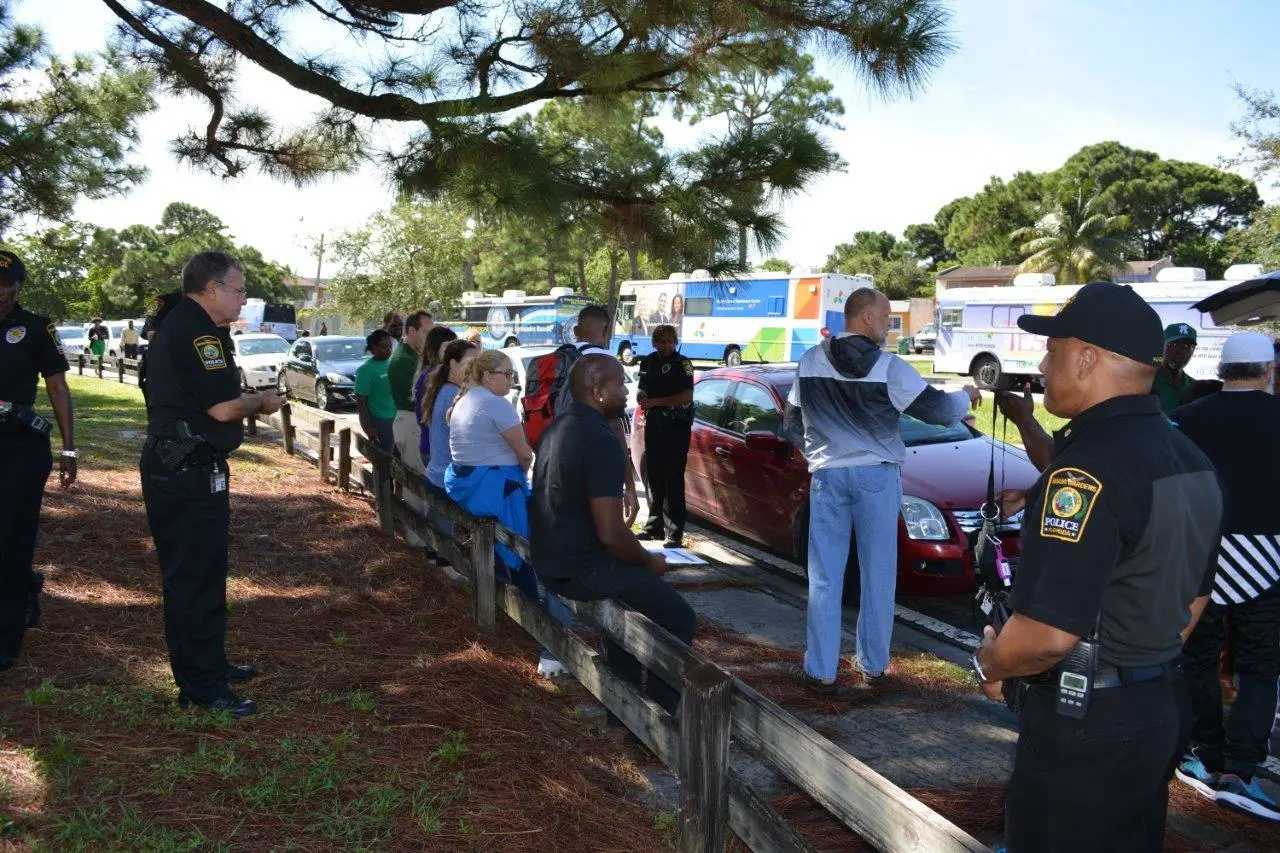And high-visibility police patrols are a proven crime deterrent. But tight budgets and staffing challenges have increasingly made staffing patrol operations difficult. In this post, we’ll discuss problem-oriented policing, an innovative approach designed to bring policing to where it’s needed most.
What is Problem-Oriented Policing and Why is it Important?
Defined by the Rand Corporation as “diagnosing and solving problems that are increasing crime risks,” problem-oriented policing fits into a data-driven policing model that entails diagnosing and solving a wide range of crime-causing problems, making resource-strained police departments more efficient while serving to improve community relations and deter crime.
Components of Problem-Oriented Policing
Aggregate Crime Data
How does problem-oriented policing work, exactly? It begins by identifying specific areas where crime is occurring. Unlike the traditional “hotspot policing” approach of the past that flooded certain neighborhoods with cops only to increase arrests while failing to deter crime, POP’s use of crime data is simply meant to identify at-risk areas, so command staff is better equipped to deploy proper resources to diagnose and solve underlying problems that can often lead to crime.
Place-Based Policing
Place-based policing is an important component of a larger problem-oriented policing strategy. According to the National Policing Institute, place-based policing assumes that places, in addition to people, contribute to the presence of crime. Beginning where crimes are heavily concentrated, the goal is to identify and track a series of known variables that may lead to crime so that police and residents, community members, and other agencies can work together in building sound crime prevention strategies. Place-based policing, which strategically and systemically focuses on environmental risk factors, results in better outcomes than traditional person-based policing.
Community Engagement
Community engagement is a central component of problem-oriented policing. This makes sense considering that community members understand their neighborhoods intimately, from experiences with crime to incidents of disorder. Through regular surveys, check-ins, and their own observations, police are encouraged to work with the community, both to resolve certain issues that have been shown to correlate to crime (e.g., a broken streetlight) and for the purposes of identifying variables and carefully assessing risk.
Risk Terrain Modeling
The collection and analysis of data are key in problem-oriented policing because it enables a form of assessment called risk-terrain modeling (RTM). The RTM theory focuses on correlating crime data to a diverse array of variables that have been shown to have a correlation with crime. This can be spatial and temporal (place and time) or geographic variables like the proximity and number of liquor stores and bus stops to graffiti and broken windows. Because it can assess risk for any number of crimes, leveraging the RTM theory is an important priority for urban areas facing gun violence, as well as suburban and rural areas facing other issues, such as property crime. This data-driven approach allows resource-strained agencies to send patrol units to the most at-risk areas, enabling proper dosage to deter crime effectively and efficiently.
Force Multiplier Technology to Optimize Problem-Oriented Policing
With crime rates on the rise and resources limited, we’ve seen, time and time again, that force multiplier technologies in law enforcement can make a tremendous difference. Gunshot detection technology, for example, can improve officer response times, aid evidence collection, and even save lives. The same can be said for the right patrol management software. The correct solution can help agencies with limited resources direct the right resources to the right place at the right time, reducing crime and supporting public safety.
How ResourceRouter™ Can Help
ResourceRouter is a powerful data-driven patrol management tool that incorporates and streamlines many components of the POP framework. The platform starts with documented crime events while excluding misdemeanor and nuisance crimes that can create negative feedback loops with enforcement bias.
Unlike traditional hotspot analysis reporting, which can rely on days-old data and cast a wide net in the direction of patrol units, ResourceRouter-directed patrols are designed to be precise. With ResourceRouter, agencies receive near real-time automated hotspot analysis reports with precise 250m by 250m areas for officers to patrol. The system’s well-trained machine learning models are based on objective, non-biased data and leverage multiple crime theories, including risk-terrain modeling, to determine the highest areas of crime risk and recommended response tactics. Furthermore, pre-patrol briefings provide situational awareness for each patrol area, and the system allows agencies to design and assign tactical responses to specific crime types within directed patrols and measure their effectiveness. All these features provide optimal outcomes even with limited resources.
Patrol Metering
With intelligent patrol metering in ResourceRouter, each patrol area has a visible 15-minute timer and patrol meter to provide visual guidance on how much time has been spent in an area. By providing data on which patrol areas have already been visited and whether an area has received the prescribed number of visits, these control features significantly support crime deterrence while reducing over-policing. Furthermore, they give command staff greater insight into how patrol officers are spending their time, promoting a culture of increased transparency and accountability, both within departments as well as with communities.
Non-Enforcement Tactics
As we’ve already discussed, community involvement is a major component of problem-oriented policing, and ResourceRouter is a valuable tool for supporting a community-centered approach and building relationships with residents and business owners as critical stakeholders in deterring crime. With ResourceRouter, patrol units are equipped with recommended, pre-approved, light-touch, non-enforcement tactics suited to the unique characteristics of each directed patrol location. Officers can also record observations, such as abandoned storefronts, broken streetlights, and incidents of vandalism. Like traditional enforcement practices, these activities are timed and tracked, providing unparalleled visibility into actions completed and tactics applied by patrol officers during their self-initiated time.
Outcome-Based Tracking and Reporting Features
Problem solving as part of POP is made equally efficient through ResourceRouter’s powerful reporting features that prioritize visibility, oversight, and accountability. Reporting provides insight into all patrol activities including time, place, and tactics used. This means that line-level supervisors can easily view the areas officers visited during a shift, what tactics were employed, and how much time was spent in each area. It also means that law enforcement can compare tactics to actual crime outcomes, ensuring that patrol strategies can be optimized to solve problems and produce tangible results. This level of data-driven insight into officer activities and outcomes is notably absent in gut-based patrols or hotspot policing.
With improved transparency and accountability, departments can not only ensure that each community is assigned patrol resources equitably, but they can also back up their activities and results with hard evidence. This is key to rebuilding community trust, improving officer morale, and ensuring continued support (and funding) from local policymakers.
The goal of a patrol strategy should be to leverage precise and effective methods to deter crime and to increase collaboration and partnership with the community. That is the basis for POP and the foundation for ResourceRouter, which enables agencies to maximize limited patrol and analyst resources for the highest impact.






